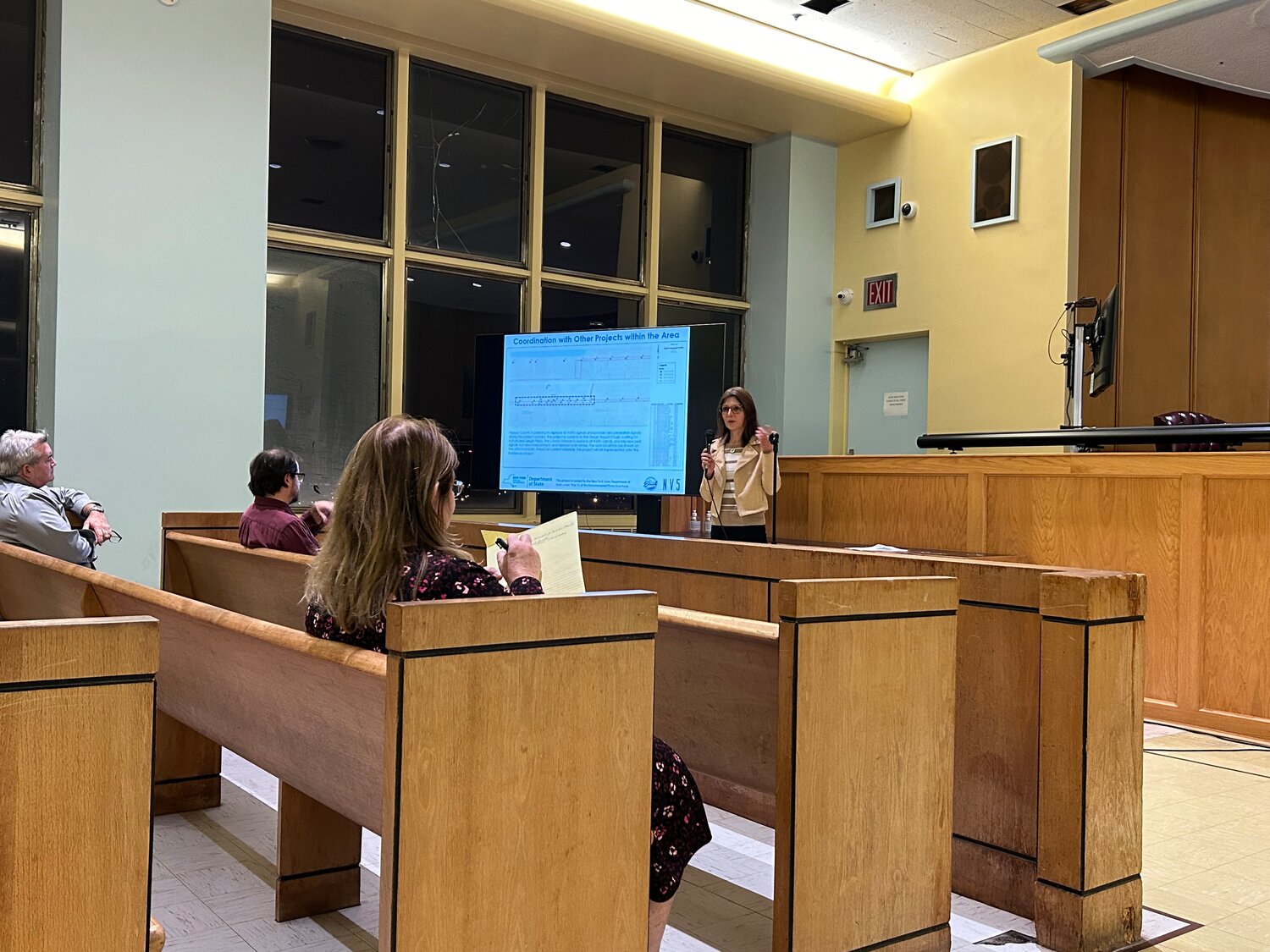This plan was unveiled to revitalize Park Avenue
The City of Long Beach has been planning to revitalize and improve the downtown and central business districts for some time, and work began in late spring. To aid in the process, the city has been awarded a state grant.
Phase 1 of the project, the restriping of Park Avenue from Long Beach Boulevard west to Grand Avenue, was done over the summer.
Phase 2 of the revitalization, titled Resilient Connectivity for Park Avenue, was outlined at the City Council meeting Tuesday night. The city applied for and was awarded a grant of up to $1.55 million for the project three years ago. It is being funded by the state Department of State under Title 11 of the Environmental Protection Fund. The city is responsible for matching the grant money.
Phase 2 will focus first on upgrading East Park Avenue, between Riverside and Long Beach boulevards. The plan is to continue the work west from there, block by block, which will require additional grant funding.
“It’s a four-month project, and it’s a very aggressive schedule,” John Febrizio, the city’s commissioner of public works, said. “Our intent is to do it in the spring months so we don’t impact the summer. That’s the main goal of the project.”
The city plans to start the work in March and finish in June.
The goals of the project include developing design standards for Park Avenue as the city’s central node, reconstructing sidewalks and ramps along the street, and installing new litter receptacles, benches, planters and bike racks. More trees will be planted, and lighting will be upgraded with decorative poles and fixtures that are dark-sky-compliant and energy-efficient.
Sidewalks will be redesigned from their current all-gray look. The inner five feet will be the same gray concrete, but the outer four feet, closest to the street, will be brick, matching the brick border in Park Avenue’s center malls across from the Long Island Rail Road station. The brick sections will contain the light posts, trees and uniform bike racks, a change from the now widely scattered racks.
“We did a slope analysis of the entire sidewalk area to determine which needed improvement,” explained Susanne Boyle, a principal landscape architect at NV5, the Hollywood, Florida-based company working with the city. “Areas of the sidewalk are also cluttered with side furniture, mostly related to the businesses, and bicycle racks … at various locations. There was no continuous layout of the sidewalk area. The same applies for the materials of the sidewalk.”
There are now 10 trees lining the stretch of Park between Riverside and Long Beach boulevards, planted both on the sidewalks and the center lots, but most of them are dead or decaying. Seven will be removed, and nine will be added.
Councilman Roy Lester questioned the removal of some of the trees, saying the city replaced a lot of trees after Hurricane Sandy. “So this isn’t because of the condition of the trees, they just have to be removed because of the resurfacing?” Lester asked. “I’m just curious, because we spend a lot of money on that after Sandy.”
“They have to be removed because they’re already in decline,” Boyle responded. “They are 70 percent dead wood … and would not survive the construction. And those trees are from before Sandy. Those trees were not replaced.”
The new light posts will be somewhat vulnerable to salty air from the ocean, much like the newer posts on National Boulevard and Penn Street. To protect them, Febrizio said, the city would repaint each pole periodically, costing about $250 per pole.
“So my recommendation is to just keep up with the maintenance,” Febrizio said. “We’re bidding out our streetlight contract, which is expiring in November of next year, and we’re going to incorporate a painting item.”
Nassau County is also planning to replace all traffic and pedestrian signals in the project area, though that work is now only in the design phase.

 50.0°,
Overcast
50.0°,
Overcast 




